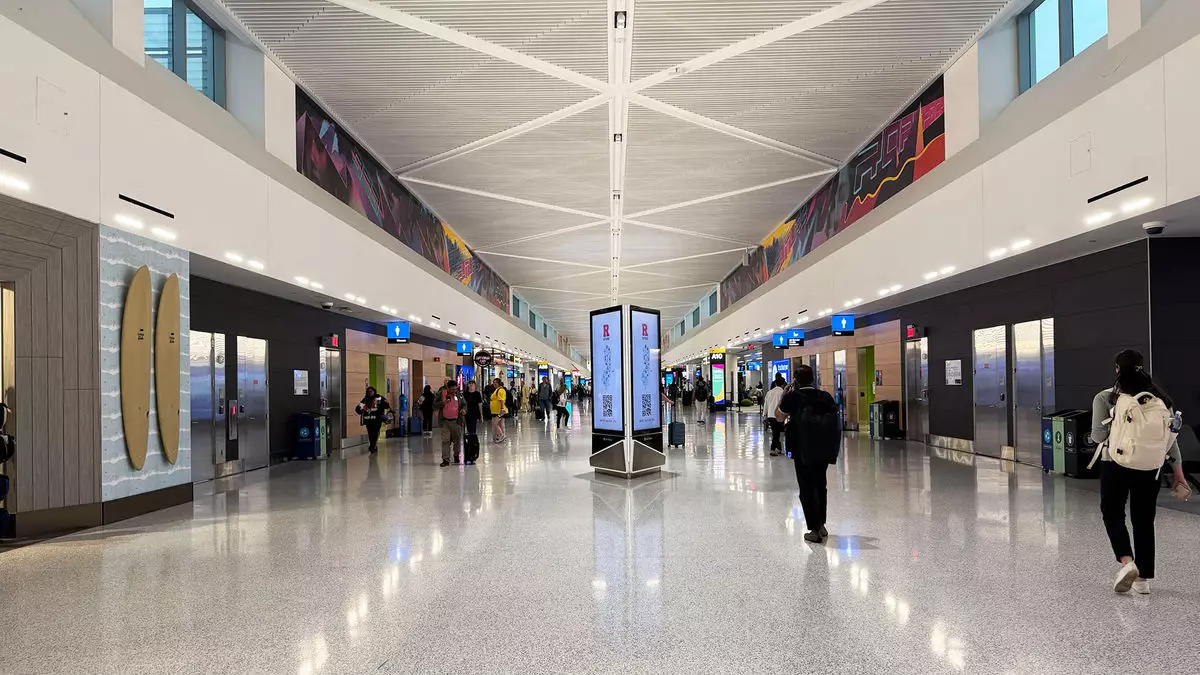Newark Liberty Airport, a cornerstone of air travel in the northeastern United States, recently made headlines not merely for its bustling traffic but for its commitment to restoring operational efficiency. The early reopening of runway 4L-22R isn’t just a win for the Port Authority of New York and New Jersey; it signals a strategic shift in how such disruptions are handled. Initially shut down on April 15th for necessary repairs, this runway’s closure shrank Newark’s operational capacity significantly. With just two runways in service, travelers faced an onslaught of delays and cancellations, compounding existing issues stemming from communication troubles in the air traffic control center outside Philadelphia.
The swift reopening of the runway nearly two weeks ahead of the anticipated June 15 completion date serves as a testament to the airport management’s dedication to restoring normalcy. Rick Cotton, the executive director of the Port Authority, underscored the urgency of expediting the repairs in light of mounting pressures on the airport’s capacity. It’s this kind of proactive decision-making that could redefine the operational frameworks in place at other airports facing similar crises.
A Collaborative Effort to Alleviate Congestion
In an era where airline reliability is paramount, Newark’s challenges have not gone unnoticed. The situation at Newark became dire enough that United Airlines, the airport’s primary carrier, willingly agreed to scale back operations by cutting 35 flights per day to help manage congestion. Although this move was helpful, it wasn’t sustainable in the long run. The FAA’s decision to implement a cap on hourly arrivals and departures proved necessary to cope with the overload; clearly, the collaboration among stakeholders was instrumental.
The Port Authority didn’t shy away from stepping up, mobilizing additional crews and expanding construction schedules to work 24/7. This level of commitment raises pertinent questions regarding operational efficiency in times of crisis. Are there underlying practices within airport management that, if applied correctly, could prevent such scenarios from escalating? Newark’s situation serves as a pilot case to examine the intricate dance of coordination, resource allocation, and strategic planning among airlines and airport authorities.
Financial Considerations: Making Flying Accessible Again
The $128 million investment to renovate runway 4L-22R went beyond mere surface repairs; it involved comprehensive improvements, from upgrading lighting to enhancing drainage systems. Even though financial prudence is crucial, there’s no denying that infrastructure investments like these ultimately pay dividends in reliability and traveler satisfaction. The rise in operational efficiency comes at a time when travelers express strong expectations for seamless journeys amidst increased travel demand.
Moreover, United Airlines CEO Scott Kirby indicated that this renewed confidence in Newark would lead to a summer of unparalleled operational reliability. With projections suggesting it might become the most dependable airport in the New York area, it is essential to consider how this shift might influence ticket prices and booking behavior. The notion that travelers might soon find the best deals in history due to reduced bookings is particularly compelling. It highlights the intrinsic relationship between supply and demand, and how external pressures can create opportunities for savvy travelers.
The Road Ahead: A Resilient Future
As runway 4L-22R resumes operations, a broader conversation about the future of Newark Liberty Airport and its consortium of operational partners emerges. The prospect of returning to a fuller capacity—up to 380 daily flights—while remaining mindful of the FAA’s traffic restrictions opens a new chapter for Newark. The real test lies in sustaining these improvements while navigating the complexities of demand and operational constraints.
In essence, Newark Liberty is not just reestablishing its status as a vital travel hub, but it also stands as an example of how challenges can be transformed into opportunities. While many airports may continue to grapple with problems similar to those that beset Newark, the proactive strategies and cooperative solutions that emerged here can serve as a roadmap for effective crisis management in the aviation sector. With the right adaptations and innovations, Newark can confidently stride into a more efficient and passenger-friendly future.

